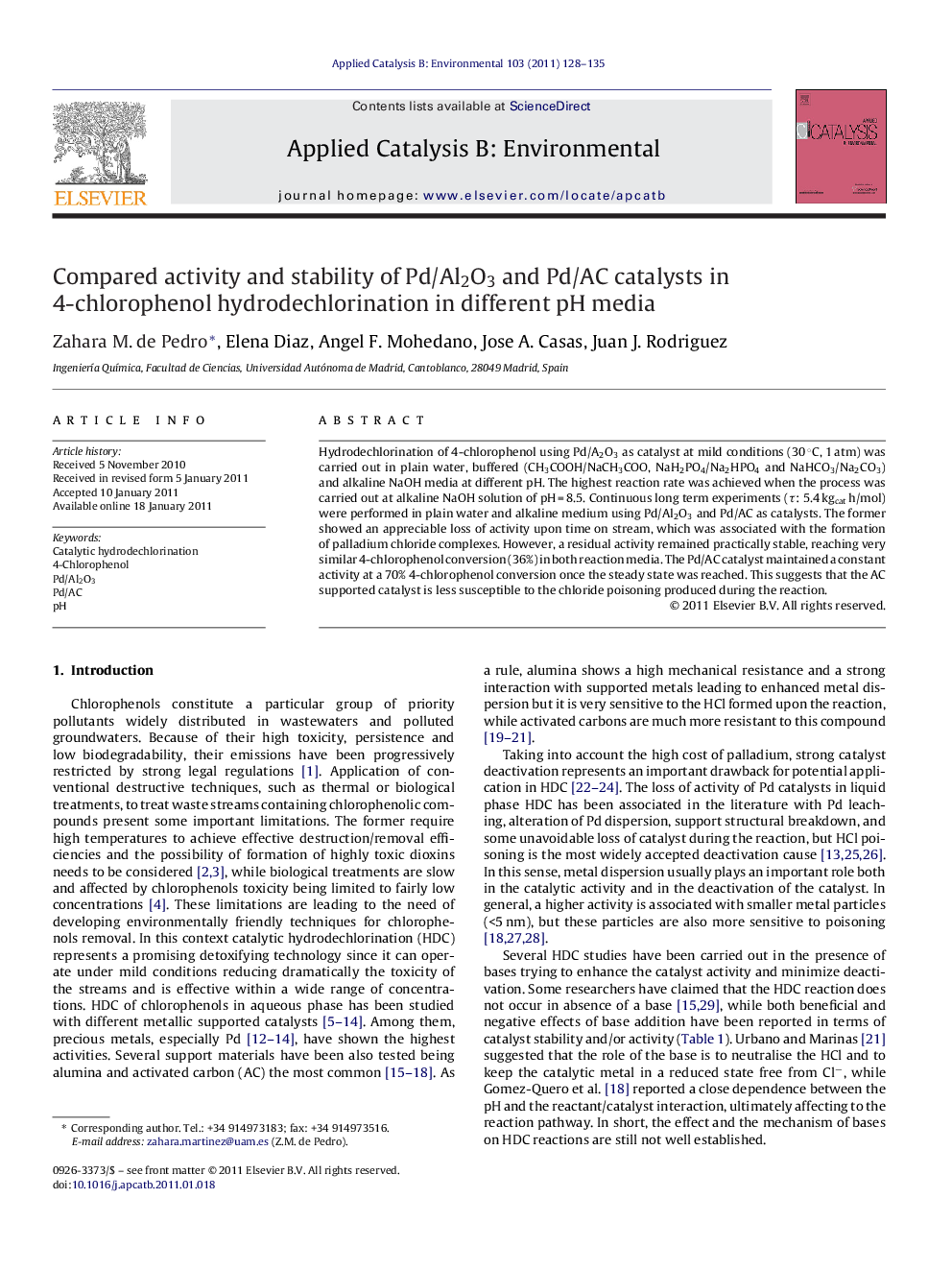| کد مقاله | کد نشریه | سال انتشار | مقاله انگلیسی | نسخه تمام متن |
|---|---|---|---|---|
| 47001 | 46455 | 2011 | 8 صفحه PDF | دانلود رایگان |

Hydrodechlorination of 4-chlorophenol using Pd/A2O3 as catalyst at mild conditions (30 °C, 1 atm) was carried out in plain water, buffered (CH3COOH/NaCH3COO, NaH2PO4/Na2HPO4 and NaHCO3/Na2CO3) and alkaline NaOH media at different pH. The highest reaction rate was achieved when the process was carried out at alkaline NaOH solution of pH = 8.5. Continuous long term experiments (τ: 5.4 kgcat h/mol) were performed in plain water and alkaline medium using Pd/Al2O3 and Pd/AC as catalysts. The former showed an appreciable loss of activity upon time on stream, which was associated with the formation of palladium chloride complexes. However, a residual activity remained practically stable, reaching very similar 4-chlorophenol conversion (36%) in both reaction media. The Pd/AC catalyst maintained a constant activity at a 70% 4-chlorophenol conversion once the steady state was reached. This suggests that the AC supported catalyst is less susceptible to the chloride poisoning produced during the reaction.
Figure optionsDownload as PowerPoint slideResearch highlights
► The highest reaction rate with Pd/Al2O3 catalyst took place at pH ≈8.5.
► Pd/Al2O3 suffered a similar loss of activity in plain water and NaOH solution.
► Deactivation of Pd/Al2O3 was associated with the formation of Pd–Cl complexes.
► A higher activity and stability was exhibited by Pd/AC catalyst.
Journal: Applied Catalysis B: Environmental - Volume 103, Issues 1–2, 14 March 2011, Pages 128–135